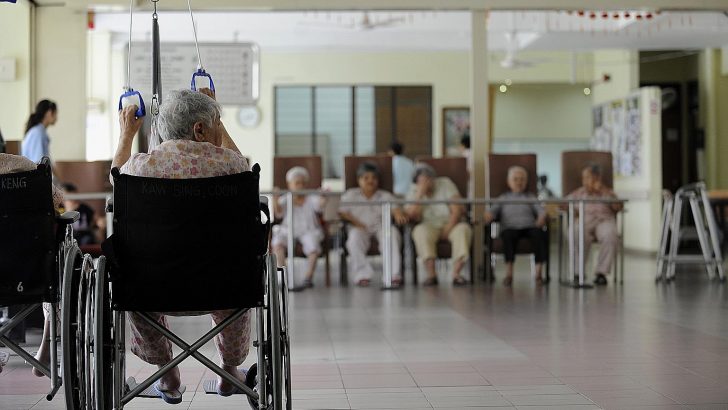An ageing population has led to a significant increase in the number requiring nursing home care in Ireland in recent years. While the vast majority of adults aged over 65 continue to live at home, about 5% have care needs that require placement in long-term care rising to about 20% in those aged over 80 years.
Indeed, the average age of those entering nursing home is between 80-85 years and about two thirds are female, figures which have remained relatively stable over the past two decades.
In the 1980’s, the majority of all nursing home facilities were state run (70%), but due to increasing demand as well divestment of care by state authorities over two thirds are now privately managed.
There are several factors including physical, cognitive, mental health and social that come to play in determining the complex care needs that may result in someone no longer being able to live at home.
While dementia ranks as one of the commonest disabilities leading to institutionalisation, severe physical impairment due to stroke, advanced arthritis and other conditions like Parkinson’s are also common. In many cases, it is the combination of both cognitive and physical problems (poor mobility, recurrent falls) that impacts on activities of living that makes home living no longer viable or safe.
The decision around going to a nursing home is often complex and difficult for the individual and their family. For many, not only is there a loss of their own personal privacy and space but a perception that a nursing home is the ‘end’ as a result of the culmination of their medical problems.
While many live in nursing homes for several years, a significant proportion will have much shorter stays reflective of complex medical illness. In Ireland (based on limited data), the mortality rate in nursing home (at one year post admission from hospital) is about 25% and about half will not survive beyond 2.5 years, figures comparable to other countries.
Preferable
It is always preferable to keep people at home for as long as is possible in a supportive environment. However, providing for those individual care needs will depend also on social, family and indeed financial factors that will vary case by case. For example, living alone or having no children or close family members can make the difference between staying at home or going to long-term care.
When 24-hour care is needed, expense makes it out of reach for most people and indeed exceeds the cost of nursing home itself. However, care needs are often much less and may vary from having more frequent calls and help with personal care to daytime supervision such as in those with dementia (who may be at risk of wandering or hazardous activity) but who pose no difficulties at night.
Unfortunately, limitations in the extent and availability of home care support can mean that for some, nursing home may be the only option to bridge this gap.
In practise, additional home support would ensure that a proportion of such older adults remain at home rather than going to long-term care.
The Nursing Home support scheme otherwise known as the ‘Fair Deal’ scheme was introduced in 2009 as a funding model that can be accessed by all who are deemed medically in need of nursing home.
In general, under Fair Deal 80% of income and 7.5% of assets are taken per year to fund nursing home costs, payment of which can be deferred. Where the asset is a family home the 7.5% contribution is capped after three years nursing home stay though all other assets after exclusion of the first €36,000 are considered.
For those with limited finances, the scheme funds the overwhelming burden of nursing home cost which accounted for nearly one billion euro in expenditure by the HSE last year.
Indeed, the scheme has gone over its funding allocation more than once and there has been delays in cases of individuals where there are complex finances and lack of capacity.
Furthermore, property that is transferred to other persons within five years of applying for the scheme is treated as an asset, a rule which is likely to face legal challenges in the future.
On the other hand, many have to make substantial contributions and some who have greater assets choose to pay privately from their own resources.
Whether this actually represents a ‘Fair Deal’ has been a matter of much discussion though in a lot of cases, an individual bears the minority of the cost.
The scheme has reduced the numbers waiting in hospital for long-term care. In addition, a substantial proportion of older adults now go to nursing home from the community where in the past they previously first entered hospital.
Providing home care packages on a statutory and needs based model to ensure that older adults in as far is as possible remain at home has been recently proposed by the Government.
For a significant proportion, this is also a more cost effective given that the average annual expense of nursing home at nearly €50,000.
Looking to the future, it is estimated that an additional 13,000 nursing home places will be needed in the next 15 years, a demand which will no doubt put a renewed focus on the discussion of how we want as a society to fund long term care.
Dr Kevin McCarroll is a Consultant Physician in Geriatric Medicine, St James’s Hospital, Dublin.


 Dr Kevin McCarroll
Dr Kevin McCarroll
